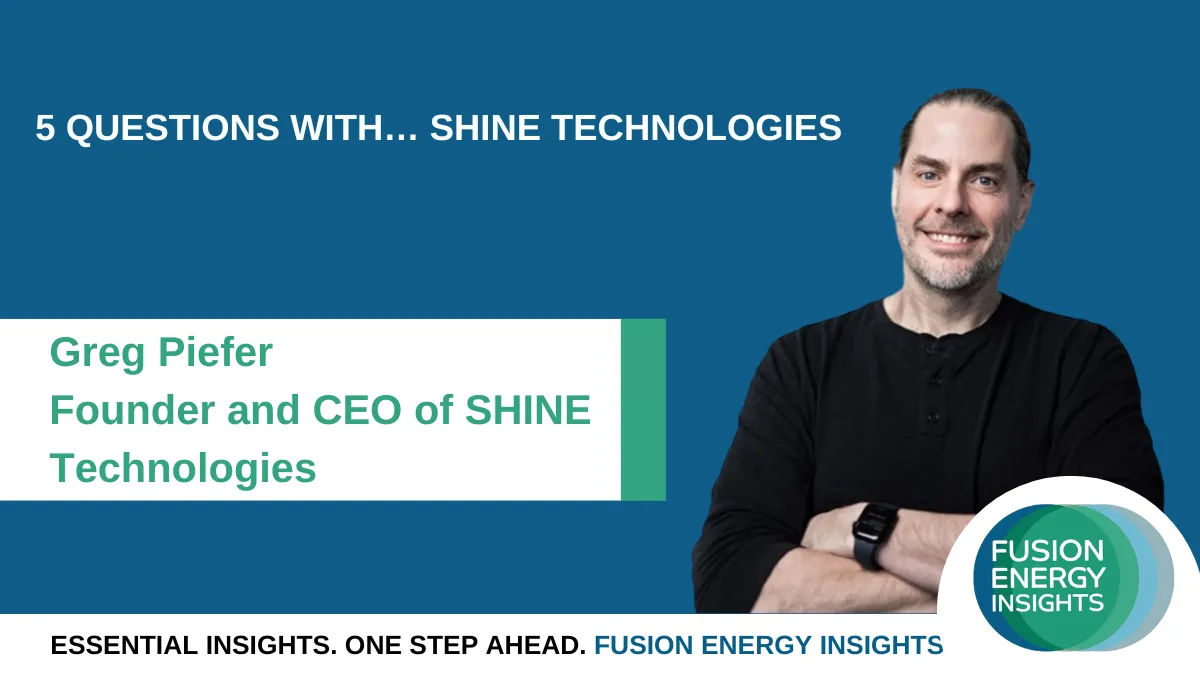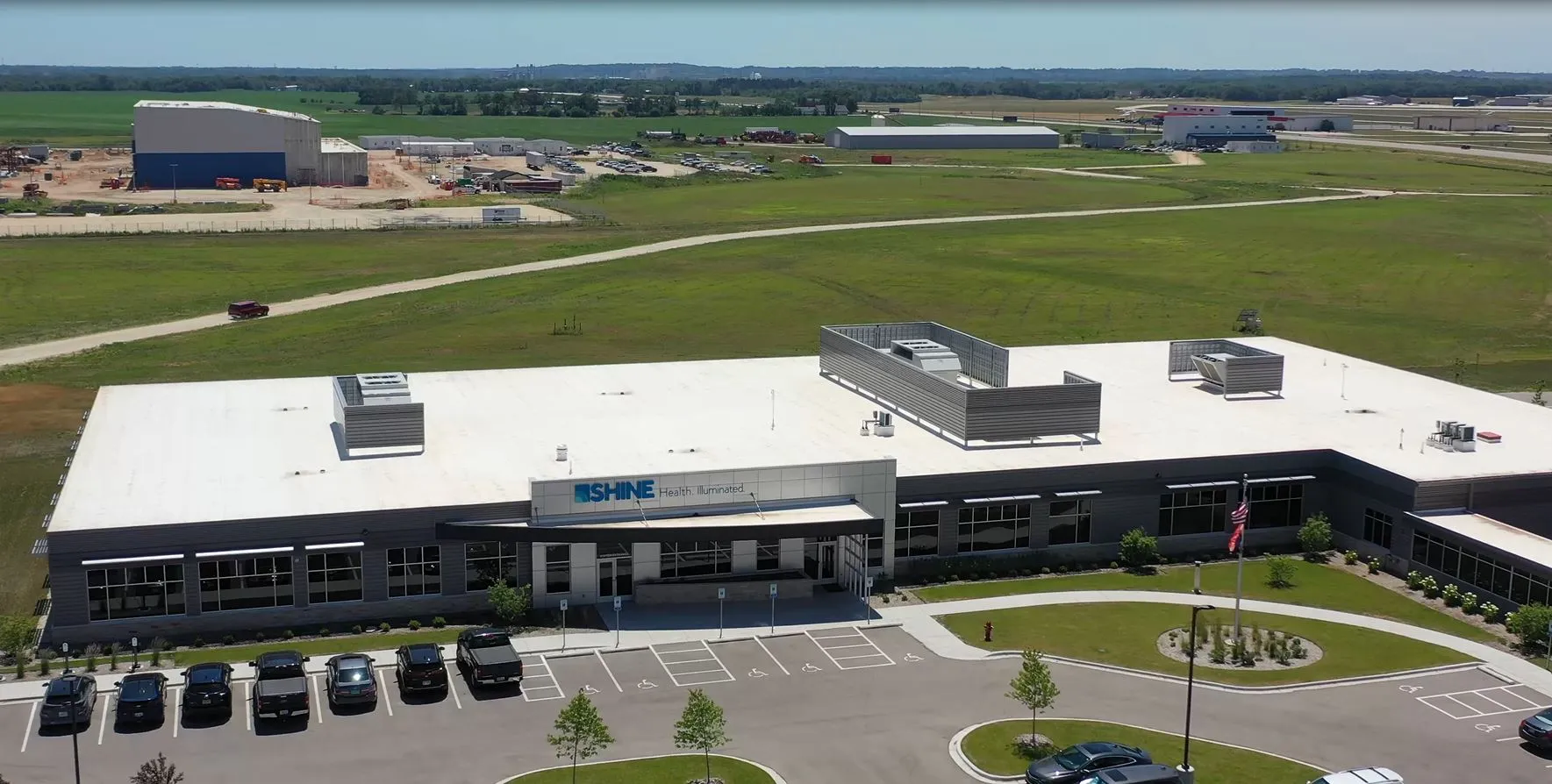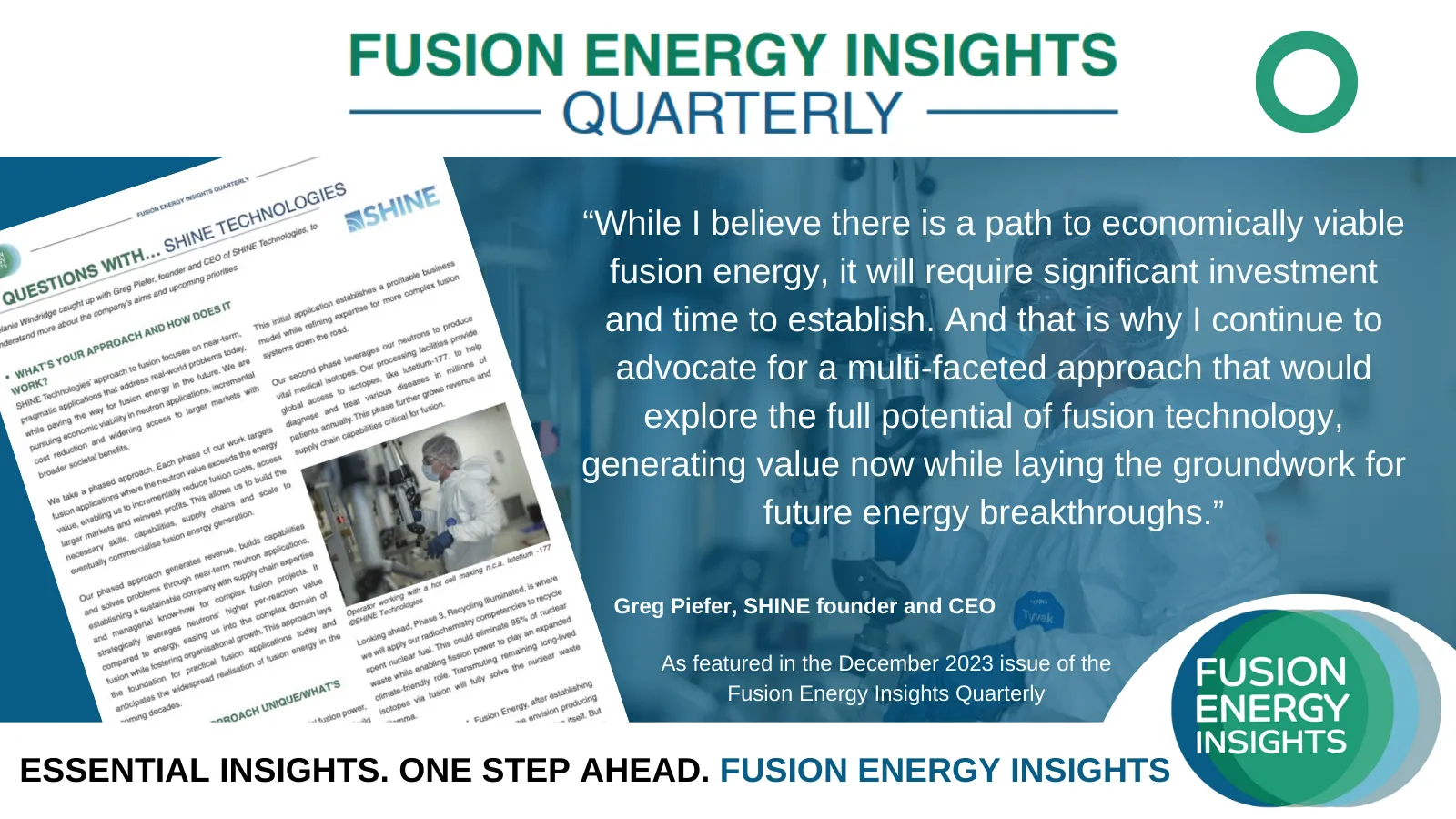5 Questions with SHINE Technologies
SHINE Technologies featured in our ‘5 Questions With…’ interview in the December 2023 issue of the Fusion Energy Insights Quarterly.
Each issue we ask a founder or CEO of a private fusion company these 5 questions:
- What's your approach and how does it work?
- Why is it unique/what's the USP?
- What are your milestones to commercial fusion—where are you now and what is your timeline?
- How are you backed financially? What have you raised and how much do you estimate you will need to raise to achieve your goals?
- What are the key strategic partnerships that you have in place or in planning that will get you to commercial fusion?
Plus a couple of personal ones.
Here is a sneak-peek of some of the things SHINE revealed.

1. What is the approach of SHINE Technologies?
SHINE Technologies’ approach to fusion focuses on near-term, pragmatic applications that address real-world problems today, while paving the way for fusion energy in the future. We are pursuing economic viability in neutron applications, incremental cost reduction and widening access to larger markets with broader societal benefits.
2. Why is the SHINE Technologies approach to fusion unique?
Rather than attempting a single leap to commercial fusion power, SHINE Technologies takes a phased approach to build capabilities and value incrementally along the way. Our four business phases create benefits while methodically advancing fusion technology towards future energy production.
- Phase One: serve the aerospace, defence and energy sectors by generating neutrons for advanced non-destructive testing of industrial components.
- Phase Two: leverage our neutrons to produce vital medical isotopes.
- Phase Three: Recycling Illuminated is where we will apply our radiochemistry competencies to recycle spent nuclear fuel.
- Phase Four: Fusion Energy. We produce cost-effective, carbon-free energy from fusion itself.

Shine Technologies, Janesville © SHINE Technologies
Leader Insight
Greg Piefer is the founder and CEO of SHINE Technologies.
How did you come to work on this particular nuclear fusion approach?
My path to commercial fusion started differently than most. Instead of entering the field as a physics undergraduate, I chose the nuclear fusion engineering program at UW-Madison, in the US.
The Fusion Technology Institute focused on engineering fusion machines while assuming physicists could make the reactions work.
However, when I saw the complexity and prohibitive cost of building functional fusion, I questioned the viability of fusion energy.
The sheer volume of raw materials required for a fusion plant, far exceeding that of other energy sources (like combined cycle, natural gas, or photovoltaic) highlighted how economically impractical this approach was. Even if we could make the physics and engineering work, it would be useless if the solution wasn’t cost-competitive. Fusion energy would remain an intriguing concept but fail to address real-world energy needs.
This realisation drove me to explore near-term applications of fusion technology. I wanted to find a path that would help society and create tangible value along the way to achieving commercial fusion.
While I believe there is a path to economically viable fusion energy, it will require significant investment and time to establish. And that is why I continue to advocate for a multi-faceted approach that would explore the full potential of fusion technology, generating value now while laying the groundwork for future energy breakthroughs.

Want to read more?
Click here to download the full ‘5 Questions With… SHINE Technologies’ article.
Members of Fusion Energy Insights get access to this article and more in an exclusive publication each quarter – The Fusion Energy Insights Quarterly.
Here we share industry updates on nuclear fusion across global activity, fusion regulation, fusion investment, fusion energy news, science and new players, plus we profile different fusion companies and include special feature articles from industry insiders, tracking the progress of this exciting clean energy solution.
